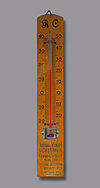Incubator (culture)
The most commonly used temperature both for bacteria such as the frequently used E. coli as well as for mammalian cells is approximately 37 °C (99 °F), as these organisms grow well under such conditions.This is important in the cultivation of mammalian cells, where the relative humidity is typically >80% to prevent evaporation and a slightly acidic pH is achieved by maintaining a CO2 level of 5%.From aiding in hatching chicken eggs to enabling scientists to understand and develop vaccines for deadly viruses, the laboratory incubator has seen numerous applications over the years it has been in use.The earliest incubators were invented thousands of years ago in ancient Egypt and China, where they were used to keep chicken eggs warm.While he eventually had to discontinue his work due to the Spanish Inquisition, Rene-Antoine Ferchault de Reaumur took up the challenge in the middle of the 17th century.In the late 19th century, doctors realized another practical use for incubators: keeping premature or weak infants alive.Genetic modification could now take place on a molecular level, helping to improve the nutritional content and resistance to pestilence and disease of fruits and vegetables.




cell culturemicrobiological culturescell culturestemperaturehumidityoxygencell biologymicrobiologymolecular biologybacterialeukaryoticE. coli37 °CSaccharomyces cerevisiaeearliest incubatorsRene-Antoine Ferchault de Reaumurkerosene lampsJulius H. Hessgenetic engineeringEgyptian egg ovenEncyclopædia BritannicaAlcohol burnerBunsen burnerDesiccatorHeating mantleHot plateLab ovenMeker–Fisher burnerTeclu burnerWater bathVacuum dry boxChemostatHomogenizerLiquid whistleMagnetic stirrerMortar and pestleShakerSonicatorStatic mixerStirring rodVortex mixerWash bottleClampsClamp holderTripodBurette clampIron ringRetort standTest tube holderTest tube rackWire gauzeLab drying rackAgar plateCryogenic storage dewarLaminar flow cabinetMicrotiter platePetri dishPicotiter plateRefrigeratorAspiratorAutoclaveCork borerCrucibleFilter paperForcepsCentrifugeMicroscopePipeclay triangleSpectrophotometerSplintStopperScoopulaSpatulaTest tube brushWire brushInoculation needleInoculation loopGlasswareDean–StarkSoxhlet extractorKipp'sBoston roundCondensersCold fingerLiebigEvaporatingSyracuseWatch glassFlasksBüchnerVacuum (Dewar)ErlenmeyerFernbachFleakerFlorenceRetortRound-bottomSchlenkVolumetricHirschDroppingSeparatoryBuretteConical measureCuvetteEye dropperEudiometerGraduated cylinderOstwald viscometerPipetteDryingCragieNuclear magnetic resonance (NMR)ThieleThistleBeakerBell jarGas syringeAnalytical chemistryAutoAnalyzerCHN analyzerColorimeterInductively coupled plasma (ICP) deviceGas chromatograph (GC)Liquid chromatograph (LC)Mass spectrometer (MS)